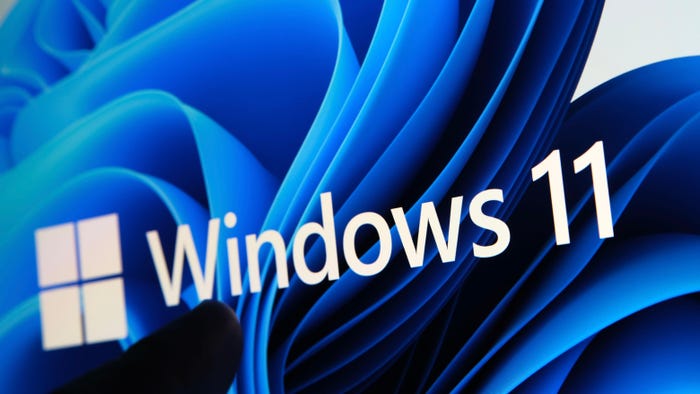Least-Privilege Technology Still Swimming Upstream, But Making Progress
Fundamental shift in endpoint security might be easier with rollout of Windows 7, experts say

The least-privilege security model is one of the oldest and best-known endpoint strategies in the industry. It has the support -- at least on paper -- of Microsoft, and products for implementing it have been available for years. Yet so far, researchers estimate that only 20 percent of corporate endpoints are using those technologies.
So what's everybody waiting for?
For those who came in late, the least-privilege concept was developed in military circles more than a decade ago. Put simply, it states that people -- and their PCs -- should be given access only to information (and software) they expressly need to do their jobs. It's basically the "need to know" concept applied to computers -- each endpoint starts with no access and no administrative rights, and access to applications and data is given only when the end user is deemed to have a need for it.
On paper, the least-privilege concept appears ideal for the business environment, where many security breaches are caused by end users who accidentally leak data or hackers who exploit Windows administrative rights. Microsoft has lent its support to the least-privilege concept with the development of User Access Control (UAC), which creates "standard user rights" on end stations, eliminating the default administrative rights that previously characterized most Windows deployments.
In practice, however, only a small percentage of PCs currently use least-privilege technology. Analysts and other experts point to three chief inhibitors to its deployment: technology, complexity, and culture.
The first problem -- technology -- has to do with Windows itself. In the past, Windows has always granted the user administrative rights as a default, and therefore many applications developers have created software that uses those rights. Intuit QuickBooks, for example, offers several features that rely on administrative privileges, and the program wouldn't work properly if those rights were not there. Many other applications, particularly industry-specific and home-grown apps, also require admin privileges to operate.
"The biggest reason why least-privilege technology hasn't caught on is because of the applications that require admin rights in order to work," says Scott McCarley, director of marketing at BeyondTrust, a security software vendor that specializes in least-privilege. "If you've got programs that won't work without those rights, you're in a tough spot."
BeyondTrust, which works closely with Microsoft, has developed a tool called Privilege Manager, which enables the PC to access administrative rights when it needs them to operate a specific application or task -- and keeps those rights restricted the rest of the time. Of the 20 percent of end stations that currently use least-privilege, many are running the BeyondTrust software, and the company doubled its sales last year.
BeyondTrust maintains that many of today's most popular hacks would be impossible on Windows computers that don't have administrative rights. In a study conducted earlier this year, the company found that of all the vulnerabilities Microsoft labeled as "critical" in 2008, some 92 percent exploited administrative privileges in some fashion.
"Implement least-privilege without admin rights, and 92 percent of those vulnerabilities would have been mitigated," McCarley said. "That's a big step in the right direction."
But analysts say the second inhibitor -- complexity -- still stands in the way of implementation. "[Least-privilege] is a very effective control, but nearly impossible to implement on Windows XP," says Rich Mogull, founder of Securosis, a security consulting firm. "You can do it, but it's pretty hard and has a high impact on the user experience. Thus we see organizations focusing on [Group Policy Objects] and third-party security tools, since dropping to regular user permissions is so disruptive."
In an 2008 interview, Bill Jensen, a product marketing manager at Check Point, said complexity is the chief reason why least-privilege technology hasn't taken off.
"Unfortunately, there are always bugs, even at the kernel level, that can potentially circumvent security privileges," Jensen said. "Least-privilege means defining an individualized security policy for every single person or application. This is, well, nigh impossible."
For this reason, Check Point advocates the use of "default deny" technology that is implemented, not surprisingly, in the firewall. But McCarley says default deny is too restrictive, and doesn't solve the admin rights problem. This argument -- which basicially boils down to whether access rights should be defined in the network or at the endpoint -- adds another level of complexity to the discussion, and makes IT people even more reluctant to implement least-privilege technology.
Many enterprises are solving the problem by leaving administrative rights in their Windows machines, but severely restricting users' ability to access them, Mogull says. But with the rollout of Windows 7, Microsoft will make UAC and standard configurations part of the OS, and that will make the least-privilege concept much easier to deploy, he notes. The third inhibitor -- culture -- may be an even more difficult nut to crack. Analysts and other observers say that many users simply like the idea of having administrative rights on their PCs, and they don't like the idea of their machines being "locked down" to prevent the downloading of applications and data.
"I think the idea of least-privilege is just swimming too hard against the trend of consumerization of endpoints," says Andrew Braunberg, a security analyst at Current Analysis. "There are too many endpoints that are not under that level of IT control. People want to buy their own Mac, or access email through their own smartphone. And there are too many visitors, guests, and so forth on the network."
McCarley agrees that the idea of "lockdown" -- the forced standardization of PCs across large groups of users -- has fallen out of favor in today's Web-enabled world. But IT professionals should be wary of equating least-privilege with lockdown, he says.
"One of the capabilities we have in Privilege Manager is the ability to grant full admin rights to a user who is very vocal -- say, a CEO or another top manager -- and doesn't like the idea of being locked down," McCarley says. "You can give him all those rights, and then monitor what he really does with them. Then, eventually, you can just provide access to those specific applications or tasks, and restrict everything else. You can create a safe environment where a power user can do everything they need to do, without opening up the flood gates to everything."
Can least-privilege overcome all of these inhibitors? McCarley argues that, between them, BeyondTrust and Microsoft have largely solved the technology problem. Mogull believes that with the rollout of Windows 7, the complexity problem will also be significantly alleviated.
But least-privilege still faces a cultural problem -- users resist the notion that any of their rights are being taken away. The U.S. federal government is attacking this problem with the implementation of the Federal Desktop Core Configuration (FDCC) mandate, which essentially forces users to implement the least-privilege concept to increase security in a frequently targeted data environment.
"I think this is one of those cases where the federal government is actually leading the industry," McCarley says. "As the FDCC takes hold, and government agencies see that they can have least-privilege without giving up functionality, the picture will become clearer. And other industries may look over and see that they can do it, too."
Have a comment on this story? Please click "Discuss" below. If you'd like to contact Dark Reading's editors directly, send us a message.
About the Author
You May Also Like
Catch the Threat Before it Catches you: Proactive Ransomware Defense
September 5, 2024How to Evaluate Hybrid-Cloud Network Policies and Enhance Security
September 18, 2024DORA and PCI DSS 4.0: Scale Your Mainframe Security Strategy Among Evolving Regulations
September 26, 2024Harnessing the Power of Automation to Boost Enterprise Cybersecurity
October 3, 2024
[Virtual Event] The Essential Guide to Cloud Management
October 17, 2024Black Hat Europe - December 9-12 - Learn More
December 10, 2024SecTor - Canada's IT Security Conference Oct 22-24 - Learn More
October 22, 2024



_Tero_Vesalainen_Alamy.jpg?width=700&auto=webp&quality=80&disable=upscale)
